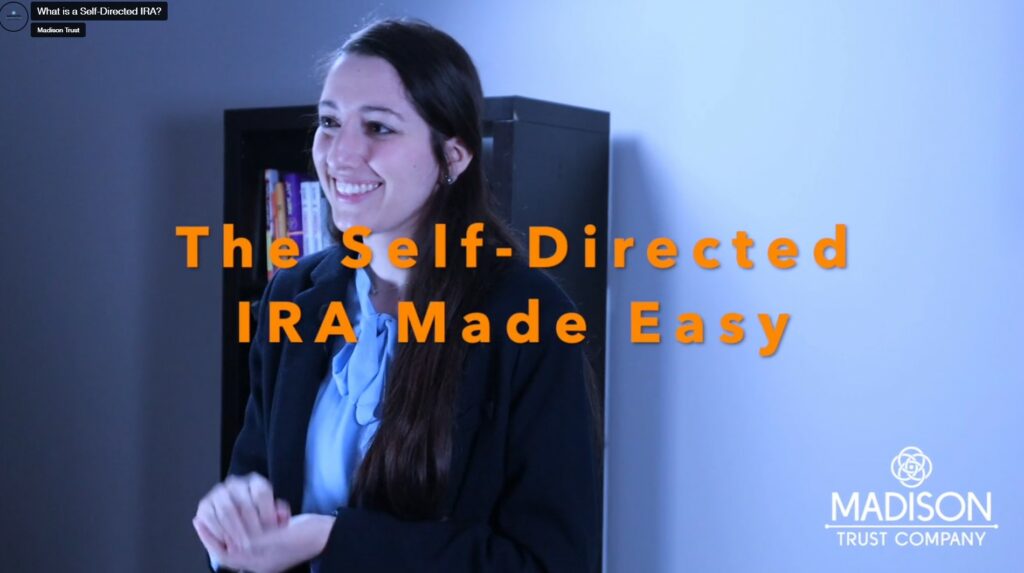6 Ways to Maximize Your Retirement Savings Before Year-End: Self-Directed IRA Checklist
Written By: Daniel Gleich
Key Points
- As the end of the year approaches, consider reviewing your Self-Directed IRA investments and taking key actions before December 31 to maximize your retirement savings.
- Actions such as taking required minimum distributions, donating to charity through a qualified charitable distribution, and performing a Roth Conversion must be completed by year-end to achieve maximum savings.
- It is recommended to take time at the end of the year to rebalance your portfolio and see where you can further diversify with alternative assets.
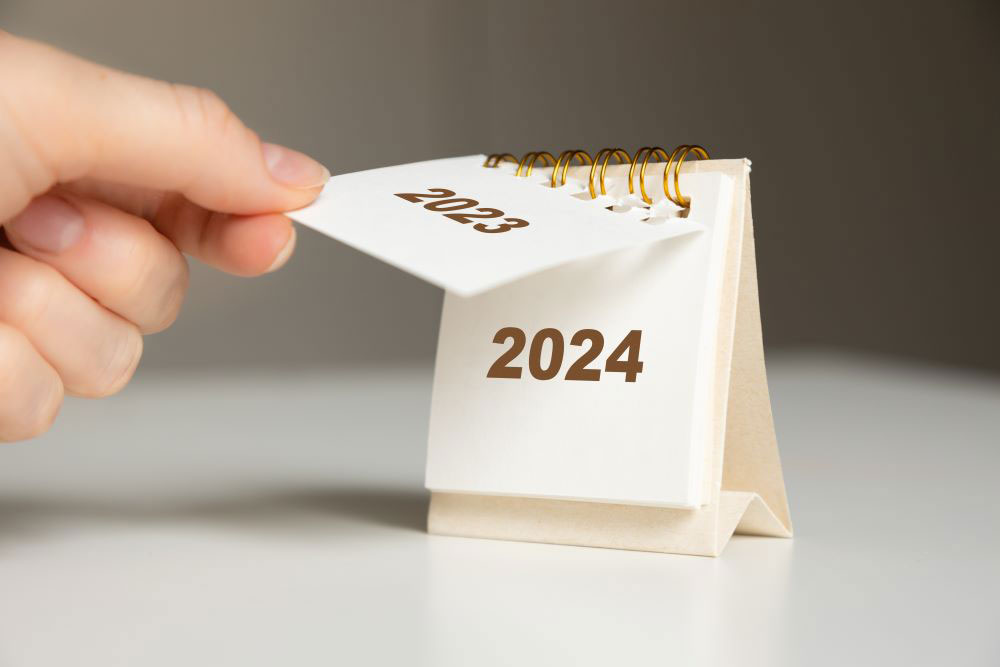
Along with wrapping presents, spending time with loved ones, and spreading holiday cheer, consider looking at your personal finances before the New Year’s countdown begins. Preparing and managing your portfolio now will make your transition to the new year and retirement smoother.
The following year-end Self-Directed IRA checklist can help you stay on track to maximize your savings, minimize your taxes, and meet your personal finance goals in the new year.
1. Maximize Your Self-Directed IRA Contributions
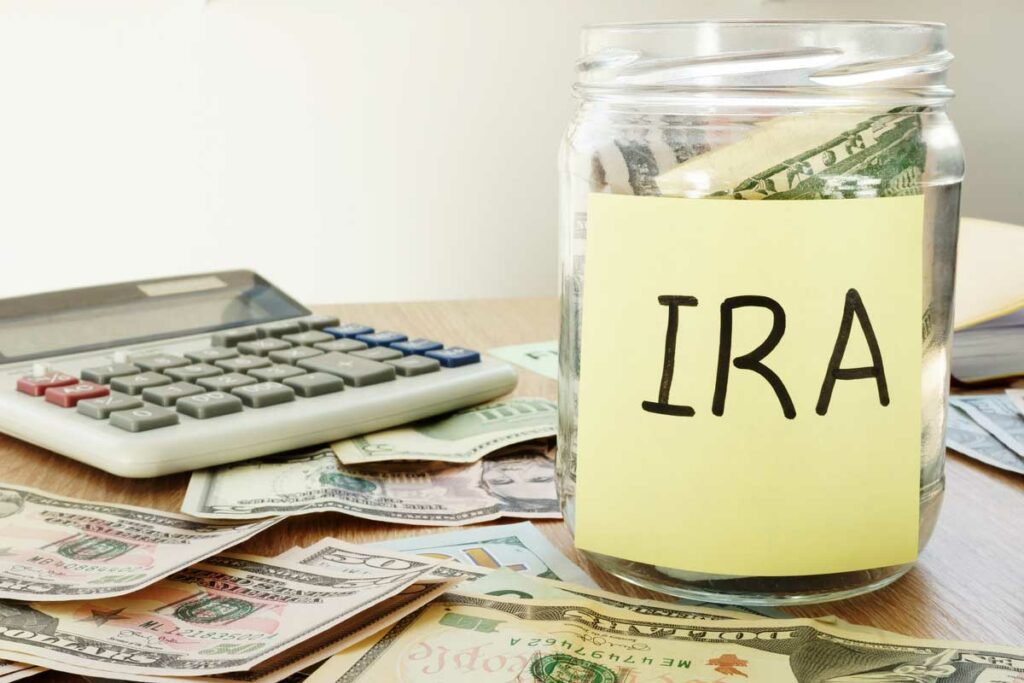
Regular Self-Directed IRA contributions can grow into significant retirement savings. Maximizing your retirement contributions can potentially reduce your earned income and lower the amount of taxes owed for Self-Directed Traditional IRA account holders. Plus, adding the maximum amount each year gives your investments more time to grow in a tax-advantaged account.
The maximum contribution limit is increasing next year, which will allow taxpayers to put away more money in 2024. Before receiving your first paycheck in the new year, consider increasing the percentage of your income that will be added to your retirement account. This will ensure you continue contributing the maximum amount.
| Type of Retirement Account | Contribution Limit 2024 | Contribution Limit 2023 |
|---|---|---|
| IRA (Traditional and Roth)* | $7,000 ($8,000 if age 50+) | $6,500 ($7,500 if age 50+) |
| Traditional 401(k) and 403(b) | $23,000 ($30,500 if age 50+) | $22,500 ($30,000 if age 50+) |
| Solo 401(k) | $69,000 ($76,500 if age 50+) | $66,000 ($73,500 if age 50+) |
In addition, now is the time to make sure that you contributed the proper amount to your Self-Directed IRA. Sometimes, without even realizing it, account holders may contribute more than the limit. Excess contributions commonly occur when an IRA owner does not satisfy the Roth income eligibility, or the IRA is funded with an ineligible rollover. If you find out you have contributed more than the limit, learn how to correct excess Self-Directed IRA contributions.
If you are unable to maximize your contributions by year-end, do not fret! The deadline to contribute to a Self-Directed IRA is the tax filing deadline.
2. Take Your Required Minimum Distributions (RMDs)
If you are age 73 or older in 2023 and have a tax-deferred account, such as a Self-Directed Traditional IRA, you are required to take distributions from your retirement account before year-end. If an RMD is not taken before the December 31 deadline, the IRA owner is subject to a 25% excise tax on the amount that is not distributed. If the mistake is corrected during a two-year “correction window” the penalty is reduced to 10%.
To calculate your RMD amount owed, refer to the IRS worksheet or speak with a Self-Directed IRA Specialist.
3. Donate to Charity via a Qualified Charitable Distribution
For some, the end of the year is the perfect time to donate to their favorite charities. If you are age 70 ½ or older and have an IRA account, consider the tax-advantaged way to donate to charity - through a qualified charitable distribution (QCD).
QCDs are tax-free, direct transfers of up to $105,000 in 2024 from your Self-Directed IRA to a qualified charity. QCDs can count towards satisfying your RMDs for the year if you are age 73+ and can lower your taxable income if certain rules are satisfied.

QCDs must be received by the December 31 deadline to satisfy that year’s RMD. Do not wait until the last minute to donate and achieve tax savings! Learn more about qualified charitable distributions and how to reduce your taxes by donating to charity.
4. Consider a Roth Conversion
A Roth Conversion is the process of switching the tax treatment of your Self-Directed IRA funds by converting your Traditional IRA to a Roth IRA. Converting to a Self-Directed Roth IRA can include the following benefits:
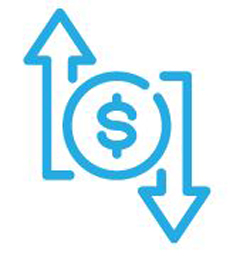
Reduce Lifetime Tax Burden
If tax rates continue to increase in the future, converting to a Roth IRA now can lower your overall tax bill since it will be based on the current tax rate.
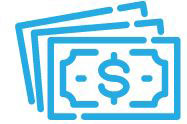
Maximize Your Estate
RMDs are not required for Roth IRAs. Your heirs can inherit the funds and take them out tax-free.

Backdoor Access to Roth IRA for Those Originally Ineligible
Some savvy investors utilize the backdoor Roth IRA strategy. They convert their funds to a Roth IRA, which avoids the income limit requirement to contribute to a Roth IRA.
Now may be a good time to convert to a Roth IRA, as markets are down and when they potentially rebound your investments could grow tax-free. Explore more about Roth Conversions and whether now is the time to convert to a Roth IRA.
5. Update Personal Information and Review Your Self-Directed IRA Beneficiaries
Think about what changes may have occurred this year. Did you happen to move to a new home, create a new email address, or get a new phone number? It is critical to update your information so your custodian can seamlessly generate tax forms and contact you. Madison Trust clients can easily update their information by completing an Update Account Information Form.
In addition to personal information, it is important to update your Self-Directed IRA beneficiary information on file with your custodian. If this information is not complete or is incorrect, it can cause a delay in the movement of Self-Directed IRA assets to your family. To designate or change the beneficiaries for your Madison Trust Self-Directed IRA, please complete a Beneficiary Designation Form.

6. Review Your Investing Strategy
Lastly, as the year comes to a close, it is important to see if you are on track to reach your long-term investment goals. Here are three actions you can take to review your investments and manage your portfolio:
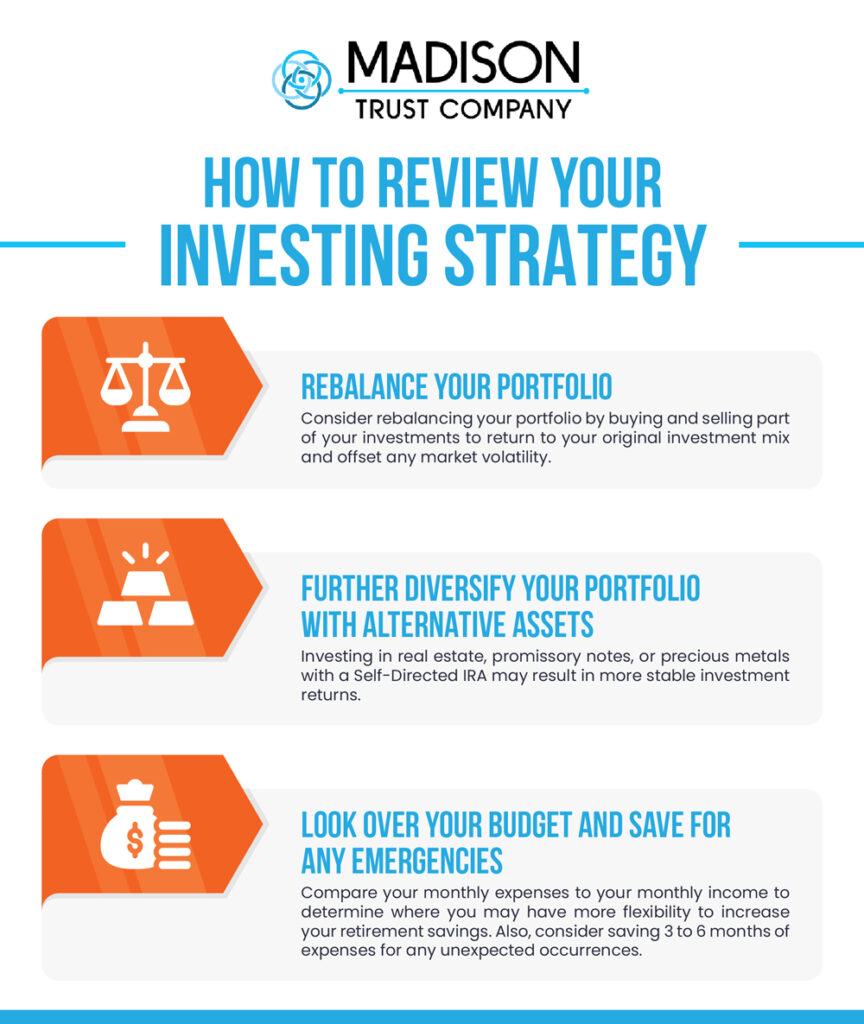
Conclusion: Let's Tie It All Up
Although you can’t plan for everything that happens in the new year, having your personal finances in order will be a weight off your shoulders. Consider keeping this checklist in your back pocket so each year you can complete the necessary actions to achieve your retirement goals.
Have Questions? We Have Answers!
Schedule a free discovery call with one of our Self-Directed IRA Specialists to get the answers you need about self-directed investing.


